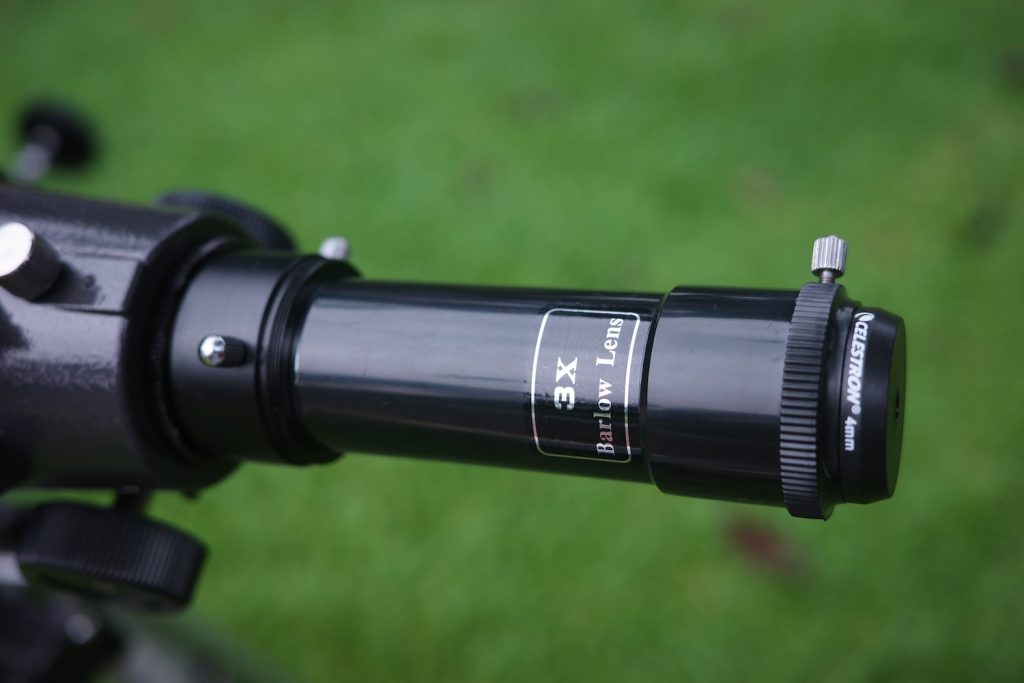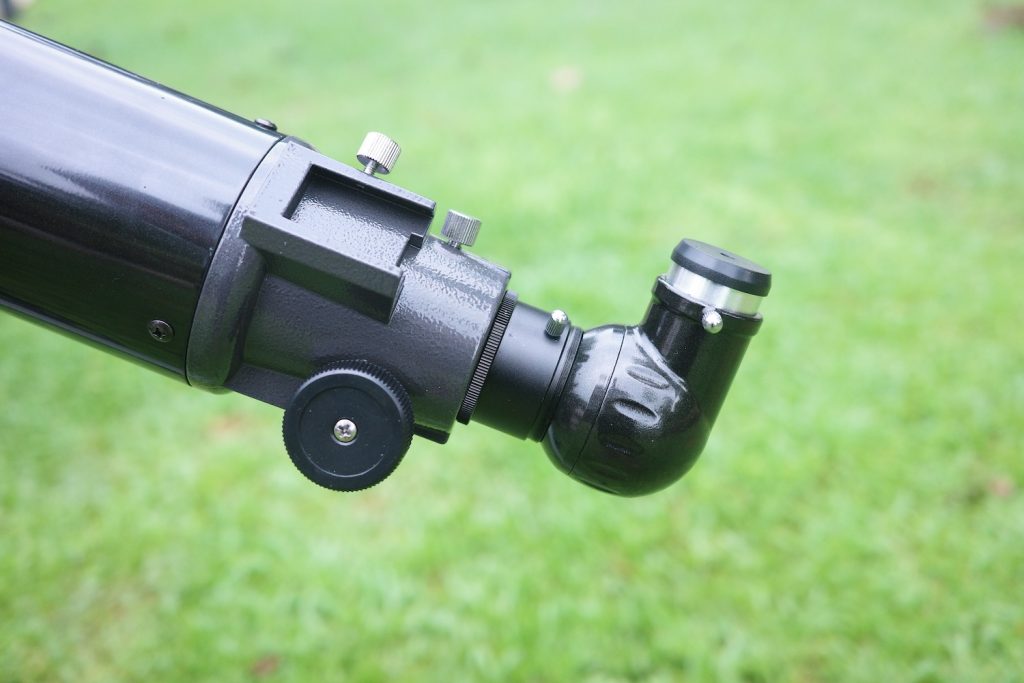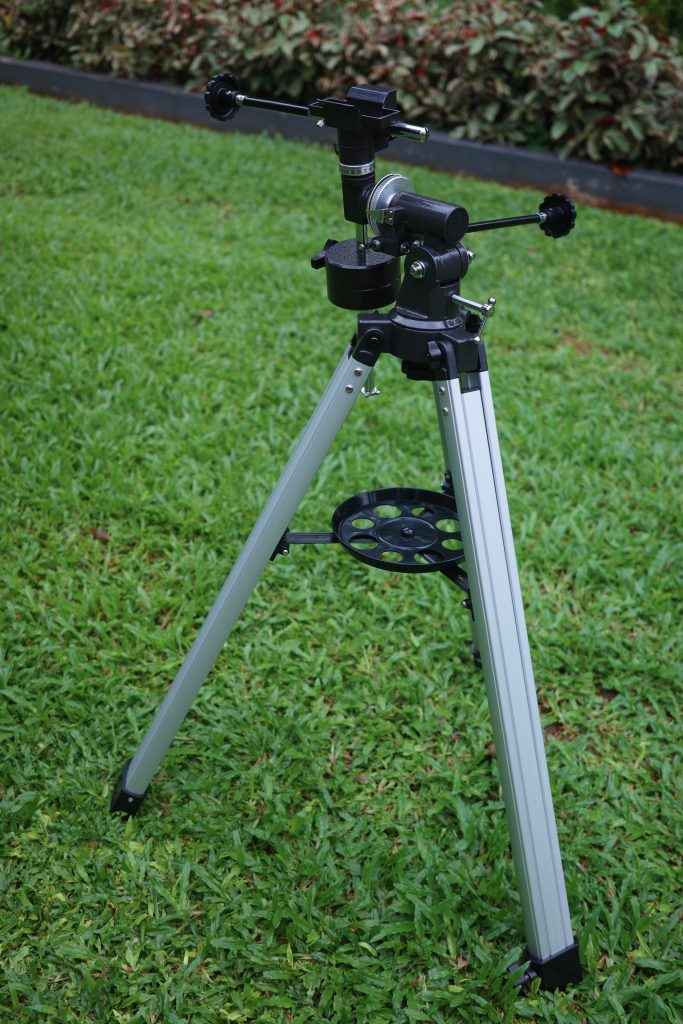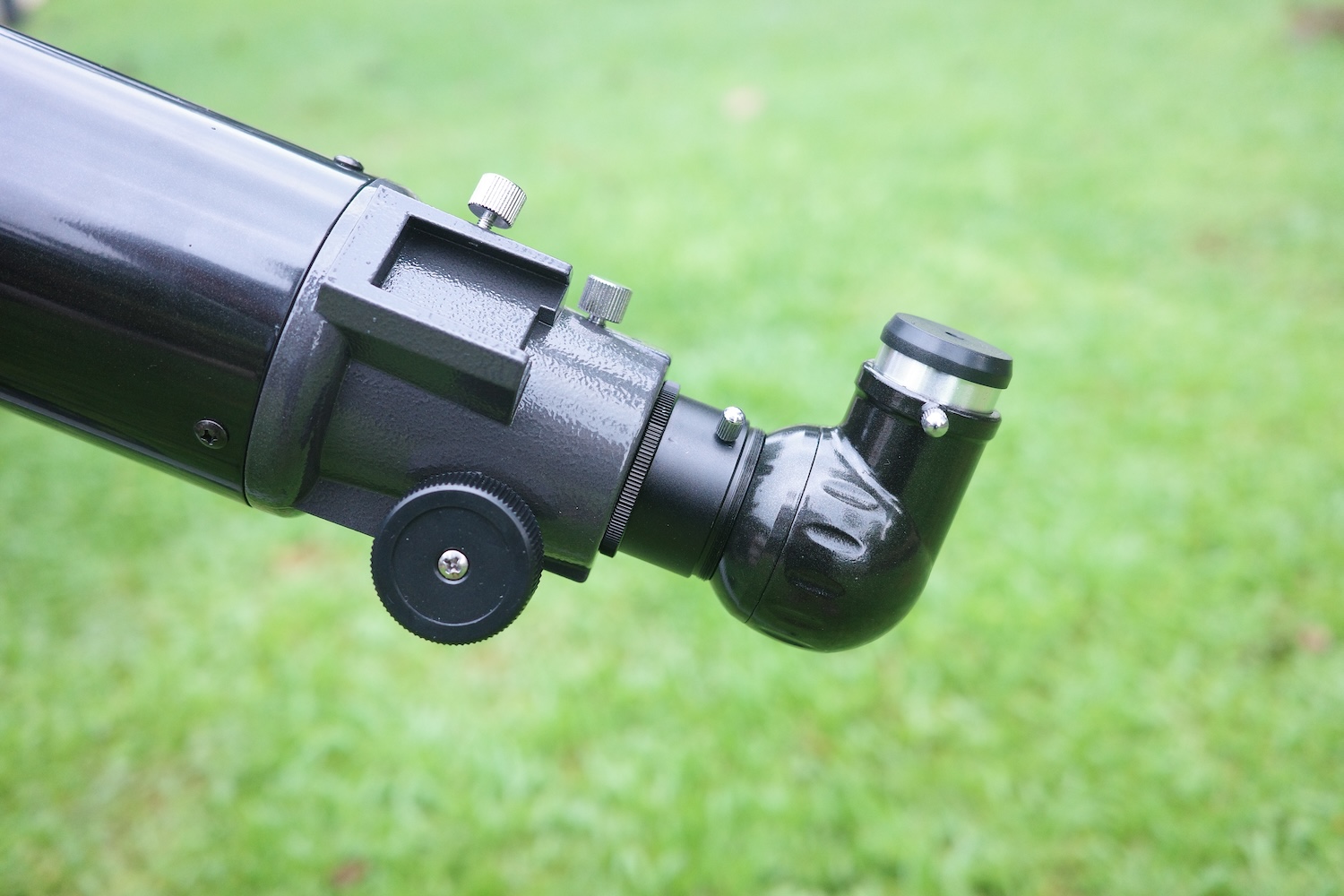An Overview of the Powerseeker 80EQ’s Optical Tube
The Celestron PowerSeeker 80EQ is an 80mm f/11 achromatic doublet refractor. At this focal ratio and aperture, some slight chromatic aberration is expected, but it didn’t pose much detrimental effect on my views. It is quite good optically and performed quite well on the Moon, planets, and double stars.

The finderscope included with the PowerSeeker 80EQ is a terrible 5×24 unit with a singlet plastic objective with an aperture stop. Upon usage, I felt it to be almost entirely useless, as the view is terrible and the cheap design of the bracket makes it all but impossible to align.
Conveniently, the focuser has a slot to attach a real, quality finderscope or red dot sight with a standard Vixen/Synta-style foot. The scope’s focuser is a 1.25” metal rack-and-pinion. It is quite well-made and sturdy.
The PowerSeeker 80EQ comes with 2 adjustable tube rings, one of which has the standard ¼ 20 piggyback screws. I find it interesting that unlike most other telescopes, these rings do not use a Vixen dovetail bar and saddle to attach to the mount; they instead bolt directly onto it. This is mildly inconvenient, as we’ll have to transport the mount with the rings attached and remember the balance point of the OTA. But this was true of most telescopes before the late 1980s anyway, and people got by with this system just fine back then.
The Lacklustre Accessories
The Not-so-Great Eyepieces
The Celestron PowerSeeker 80EQ refractor telescope comes with two eyepieces: a 20mm Kellner (45x) and a 4mm Ramsden (225x).
The 20mm Kellner is functional, though 45x is something I’d consider to be a bit much for “low” power with an 80mm telescope.
The 4mm Ramsden not only provides too much magnification to be useful with the telescope, but it also has a tiny eye lens that I had to press my eyeball right up against to see anything at all. The field of view is also narrow and fuzzy.
The Useless Barlow

Like all PowerSeekers, the 80EQ comes with the standard all-plastic 3x “Powerseeker Barlow”, designed to allow it to achieve the Celestron-advertised “675x” magnification when coupled with the 4mm Ramsden eyepiece. I always consider this as a joke. 675 is just too much magnification for any 80mm telescope, let alone even my 500mm (20”) telescope on most nights due to atmospheric seeing.
Also, the Barlow and 4mm Ramsden have the optical quality of cheap toys, so they’d be useless even if the absurd magnification weren’t an issue.
The Cheap Amici Diagonal

The diagonal supplied with the Powerseeker 80EQ is a cheap Amici unit designed to provide erect, non-reversed images (i.e., you can read a newspaper without it being flipped left-right). However, the Amici design produces an annoying spike when we use on bright objects such as planets and bright stars. This is detrimental to our views through the scope.
Because of its ergonomically-friendly shape, which is meant to facilitate it being grabbed, I often use it as a handle.
The Powerseeker EQ1 Mount
The Celestron PowerSeeker 80EQ comes with the same EQ-1 German equatorial mount supplied with all of the PowerSeeker EQ telescopes.

While not the Rock of Gibraltar, the mount supplied is quite adequate for an 80mm f/11 telescope and has smooth motions with nice manual slow-motion control knobs. You can attach Celestron’s “Logic Drive” to it for hands-free motorised tracking if you wish.
You may be wondering why I’ve given this mount a bad rap in my other Powerseeker telescope reviews. It’s because Celestron has a habit of putting telescopes way too large on the poor little EQ-1, straining the mount and causing the motions to be jerky and wobbly, as well as the whole telescope to be unstable, which overshadows the surprisingly nice features of the mount.
What can you see with the Celestron Powerseeker 80EQ?
Being a small refractor, the Celestron PowerSeeker 80EQ is mainly meant for viewing the moon, planets, and bright objects like double stars.
The Planetary Targets
I was able to see the phases of Venus and Mercury, loads of detail on the Moon, and a dark spot or two on Mars. Jupiter’s cloud belts, the Great Red Spot, and its moons were easy to see. Saturn’s rings, a few of its moons, and some dull cloud bands could also be spotted under clear skies, along with the Cassini Division in the rings on a crisp night. I could at least see Uranus and Neptune as teal and azure “stars” with the PowerSeeker 80EQ, but I had a hard time getting the scope pointed at them with the included finder, let alone identifying the planets themselves.
Deep Sky Targets
Besides its small aperture, the biggest limitation to viewing deep-sky objects with the Celestron PowerSeeker 80EQ refractor is its accessories. The 20mm eyepiece is not really a low enough magnification for easily locating targets, and the included 5×24 finderscope is absolutely atrocious. If you can get past that, expect to see the following:
- Galaxies: Even under pristine skies, most galaxies are likely to present little with the 80EQ’s meagre aperture. I was able to pick out the dust lanes in M82 and the Andromeda Galaxy; everything else remained a smudge.
- Globular star clusters: A 6” (150mm) telescope is widely considered the minimum aperture to resolve globular clusters, and that’s nearly twice as big as the aperture of the 80EQ. You’ll be able to spot globulars as big fuzzy balls—with some hint of definition—if you’re really lucky.
- Planetary nebulae: Most planetary nebulae are really tiny, and even a large scope might not show details in them. With the 80EQ, I was pretty much limited to the Ring (a tiny, doughnut-like smudge) and the Dumbbell (a small fuzzy patch that vaguely resembles an apple core).
- Even from suburban skies, emission nebulae like Orion and the Lagoon look pretty good, although only the brightest parts of them are visible.
- Open star clusters are perhaps the most impressive deep-sky targets with a small telescope, thanks to their high brightness and contrast. Hundreds of them are absolutely delightful with the 80EQ, such as M35, the Pleiades, the Double Cluster, and M29.


